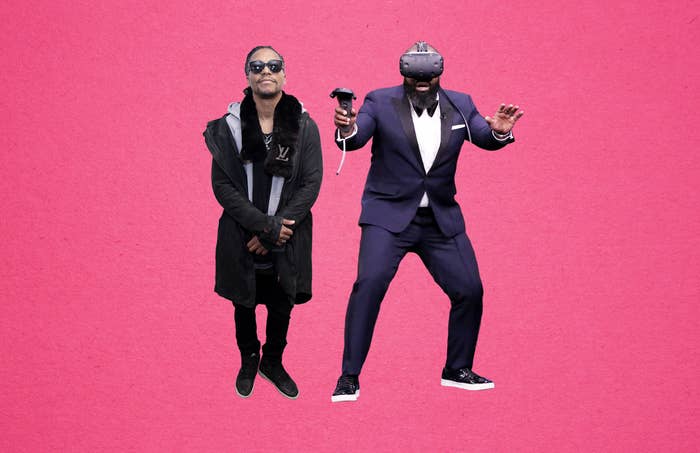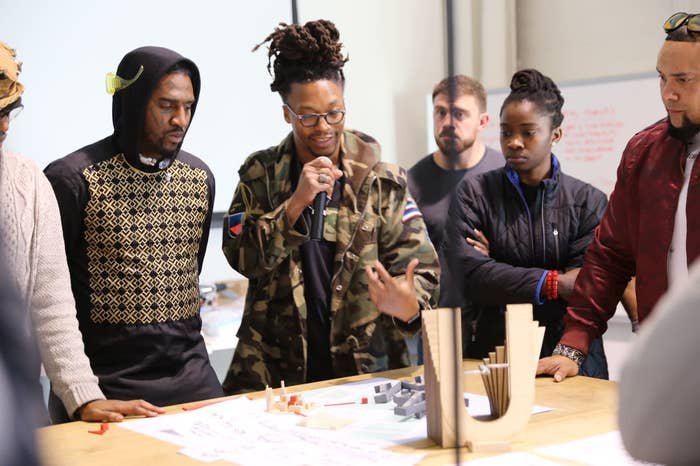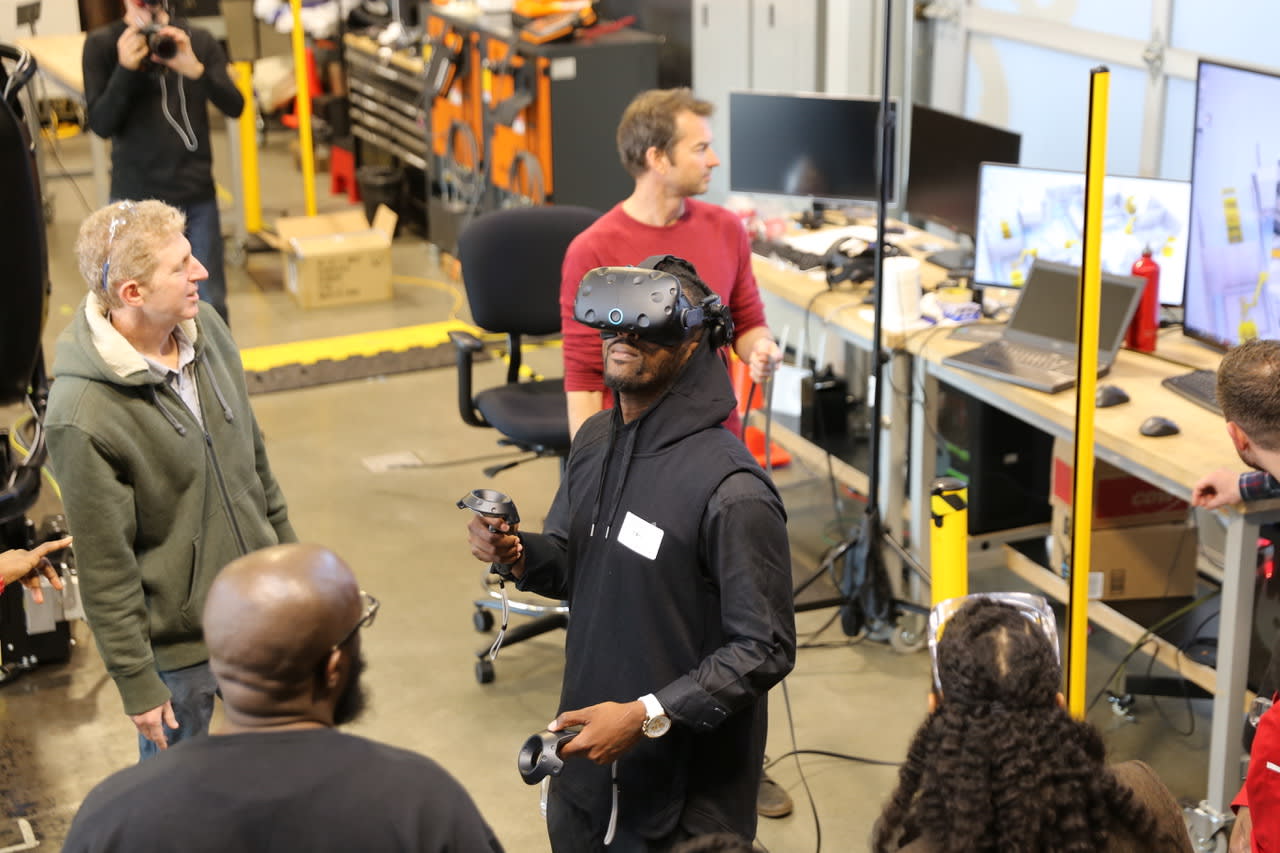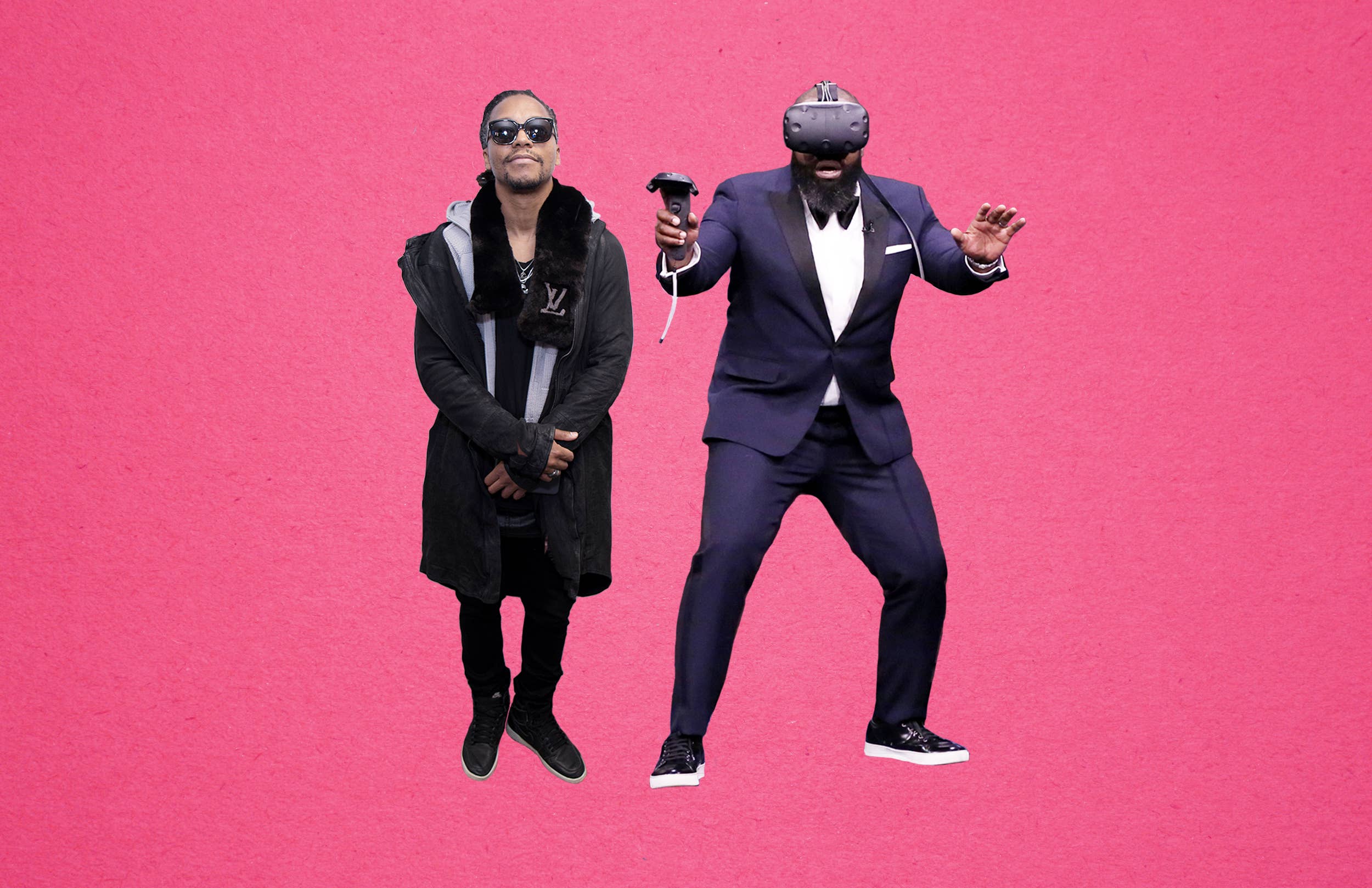
What if a dog bit you? Then the dog bit your style, before you eventually became the dog?
Impossible, right? Not in virtual reality. This multi-layered VR idea was explored by Lupe Fiasco, Chino XL, Nikki Jean, and other artists, designers, and engineers at Autodesk’s Hip-Hop Design Cypher in February.
Experts predict that the multi-billion dollar VR industry will have a massive impact on entertainment in the near future, but it's still difficult for many to visualize exactly how this technology will shape the way we experience hip-hop. At the two-day workshop in San Francisco, the possibilities came into focus.
"Fans should care about this because they can experience the real feelings we bring to the music," Chino XL said, explaining the powerful sensory storytelling possibilities that VR allows. "If I get a cut on my arm, you can’t feel my pain by just watching a music video. With virtual reality, though, you can step into my world and feel what I went through. It’s powerful."

Lupe Fiasco isn't new to the idea of playing with technological advancements to push music forward. In a recent interview with Business Insider, he spoke about how blockchain technology could become a channel to license music and help artists get more value from the content they create. When it comes to virtual reality, he's excited about the chance to add a new dimension to his music—a dimension that fans can not only hear, but feel and touch as well.
"What if the density of a song impacted your experience?" Fiasco said. "If experiencing a Rakim song is like steel, then maybe mumble rap would be like plastic."
The 36-year-old Chicago rapper also spoke about the potential of augmented reality in hip-hop and the culture as a whole. "We can use technology to identify cultural artifacts in raps," he explained. "The chain has been a symbol in hip-hop for so long. We can discuss the popularity behind the chains we wear, but also what chains mean for black people historically." Augmented reality creates opportunities for added layers of storytelling and enables creators to build experiences that were once limited to fancy museums. With AR, those barriers can be removed and the stories can reach more fans.
With virtual reality, you can step into my world and feel what I went through. It’s powerful.
Augmented reality may still be nascent in mainstream adoption, but several concepts have already pushed the boundaries. Hearables are gaining traction, bringing consumers new ways to experience music through Her-like mobile phone integrations that allow songs to interact with physical surroundings. AR concert posters are also allowing fans to unlock hidden information when they hold their phones up to the artwork.
Nikki Jean discussed how AR location-based storytelling techniques can help artists' reclaim space in communities that are culturally significant to hip-hop. "When someone died in my neighborhood, there would be a little shrine of that person," she said. "It would be there for a week at most, then it goes away. But what if we can [use AR to] go back to that location and see the shrine like it was yesterday?"

Jean, who has toured with Lupe and co-written songs with Bob Dylan and others, is already considering how to incorporate virtual reality into her live shows: "I’ve been talking with [architect Michael Ford] about how I can use these ideas on tour to bring a richer experience for fans." As VR and AR concerts become more popular, fans around the world will be able to use headsets to experience shows from a front row seat, backstage view, or even the artist’s perspective—from the comfort of their own homes.
At the end of the Autodesk event, participants created two projects: a concept that analyzed the structure of rap lyrics to create exterior facades and a sculptural garden that enabled users to inhabit spaces generated by their favorite songs. The man behind the workshop, Michael Ford, plans to incorporate these explorations in the 2018 Hip-Hop Architecture Camps—which are now in 15 U.S. cities and will expand to Kenya and Toronto this summer.
Finishing the workshop, several participants joked that they're now equipped to create the hip-hop version of Wakanda. The Black Panther reference was tongue-in-cheek, but Ford and other forward-thinking creatives like him may be closer than most people realize. These projects from the design cypher aren't far off from the Afrofuturism we witnessed in Wakanda.
The future of hip-hop is here. Remember the robots that Lupe used to have in his music videos back in the Food & Liquor days? We might be able to reach out and interact with them soon. Remember the otherwordly Hype Williams music videos from the 90s and 2000s? The new generation of directors will be able to bring those vibrant environments to life and create entire worlds for fans to live in.


